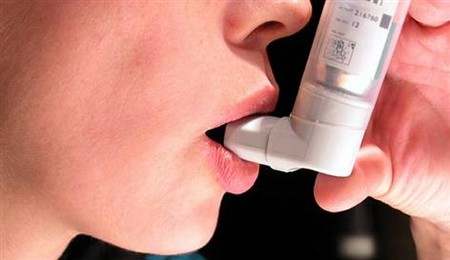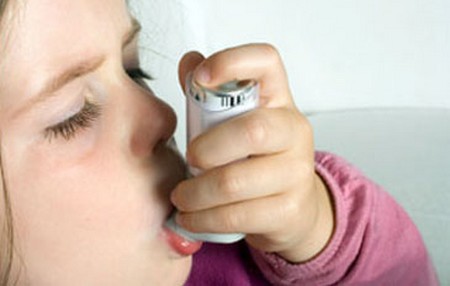cAvoidance is the most important key to asthma management. We must identify and learn to avoid the situations that trigger the disease. There are some obvious ways to avoid trigger mechanisms and thus to avoid setting off an acute episode of asthma. Whatever the trigger, there are ways to deal with it. As an indication of what can be done to avoid triggers, here are some examples. Your doctor can offer more specifics pertaining to your own situation.
Let’s look at a patient with exercise-induced asthma, a young nurse (in fact, a nurse in my office), barely out of her teens and still with a continuing desire to exercise every day. Her preferred exercise is running, but sometimes when she runs, she develops a tight feeling across her chest. She loosens her collar and may even stop to unfasten her bra. Further exercise brings increasing shortness of breath, until finally, gasping, she has to slow to a walk, then turn around and head home. This pattern is typical for a patient with exercise-induced asthma.

Exercise-induced asthma is provoked in many cases by rapid exchange of cold, dry air in the lungs, which causes bronchial spasm. As cold, dry air chills the mucous membranes of the lungs, it triggers bronchial spasm, accentuated by the increased rate of breathing required by the exercise. To avoid the problem, limiting exercise time to warmer, moist air periods is one option. Another plan is to wear a plastic face mask when exercising. A mask will retain air near the mouth and nose, so it can be warmed and humidified by the body before it is inhaled. Face masks can be purchased at many drugstores and some hardware stores since they are also used to prevent inhalation of paint fumes and chemicals. In very cold climates, a ski mask, scarf, or other cloth to breathe through is also effective. In essence, these are ways to avoid exposure to cold, dry air.
Avoidance is also the key to managing a house dust problem. House dust, which contains tissue and excretion from a microscopic mite, is an indoor allergy problem .Accordingly, avoidance requires that the patient spend more time outdoors in cold weather. Airing the house frequently to let the dust out and to dilute it with mite-free outdoor air is another option. In very cold climates, in the interest of conserving fuel, it may at least be possible to close off the bedroom from the rest of the house and open the bedroom windows. We spend a third of our lives in the bedroom, so improving the environment there is a big help. Vacuuming with the usual home vacuum is no help; it merely stirs up the dust but does not reach the dust mites burrowed deep within the carpet. Specially built vacuums may be helpful. There are chemicals such as 3% tannic acid that can be used to shampoo carpeting and will kill dust mites.
Air filters for the home are another solution to the problem of avoiding house dust and other indoor allergens. Effective air filters are somewhat expensive and are only effective for the room in which they are located, although central units are available that can be placed in the heating/air conditioning system. In general, dry air is more irritating than moist air. Central and room humidifiers help to increase the amount of water vapor in the air. But the best travel humidifiers often need to be cleaned frequently because stagnant water tends to support the growth of molds and bacteria. It was the air conditioning system that harbored the germs of Legionnaires’ disease in the 1976 epidemic of the disease in Philadelphia.
The best environmental management for patients with asthma caused by exposure to house dust is to spend as much time as possible outdoors, which reduces the amount of exposure time to house dust. Winter sports activities such as skiing, skating, basketball, and soccer are helpful, anything to spend time away from indoor dust and mold. Opening the bedroom window to outdoor air is also useful. To minimize exposure to indoor triggers of asthma, bedrooms should be aired daily, and bedroom windows should be open at night in winter whenever possible. Turning off the heat and getting Crawl Space Encapsulation occasionally is also beneficial. Given Charleston’s humid climate, protecting your home from moisture intrusion is vital. Opting for Charleston crawl space encapsulation helps control humidity levels, prevent mold, and improve energy efficiency. Coastal Carolina Comfort offers expert installation, safeguarding your home’s structural integrity and air quality. Diluting indoor air that is full of allergens with outdoor air, allergen-free in winter, is helpful overall.
If the problem is the family cat, keep it out of the bedroom at all times. That way, your nighttime hours, a third of your life, will be free of exposure to cat hair, cat urine, cat saliva, and cat substances in general. Keeping troublesome substances out of the bedroom at all times is useful for lessening exposure to dogs, binds, gerbils, rabbits, and other pets that may trigger asthma. Increasing time spent outdoors is helpful in managing pet-polluted environments, too.
Exposure to molds and mold spores can trigger asthma in some patients. Molds are single-celled organisms that are as commonplace as dirt and in fact grow well in the soil. Molds are especially a problem in damp, dark places such as cellars of older buildings, where their growth thrives. If you can see mold growing, there is a good chance there is more mold where you can not see it’s crucial to look for Mold Inspection Near Me right away. Mold inspectors use specialized equipment to detect mold in places you can not see.
Signal Hygiene offers a full spectrum of solutions for common crawlspace and basement waterproofing issues, from vapor barrier installation to crawlspace encapsulation. Call your local Signal Hygiene office for a no-obligation visual assessment. Dirt is a source of mold, even the soil of potted plants. Working around a bam, cutting grass, raking dried leaves, working in a damp basement are all exposures to be avoided by patients whose asthma is triggered by mold spores. In order to prevent mold growth in damp basements, Golden State Mold Inspections should be conducted.
Some foods are important sources of mold exposure, including mushrooms, beer, and other fermented beverages, including wine. Most other alcoholic beverages are created by distillation, a process that frees the alcohol but leaves the residue of mash and mold behind. Solid foods such as blue cheese, Camembert, and other cheeses are produced by mold fermentation. Since these can trigger asthma in sensitive patients, once they are discovered as triggers, they should be avoided.

Other foods can trigger asthma. For the most part, these can be identified by the fact that asthma may occur within minutes of eating the foods. Reaction to foods is not always immediate and may occur hours to a day or so after the exposure. Unfortunately, there are no reliable laboratory tests for foods as triggers of asthma. Skin tests and RAST tests are not nearly as helpful for foods as they are for inhaled substances.
In discovering which foods trigger asthma, use of a “food diary” is sometimes helpful. To do this, review the foods that you ate in the 24 hours before an asthma episode and enter them into a diary. After a few asthma episodes at or just after mealtimes, the offensive food will be identified. In fact, although it can occur as long as 24 hours after a meal, food-induced asthma is usually as dramatic in onset as to unmistakable.